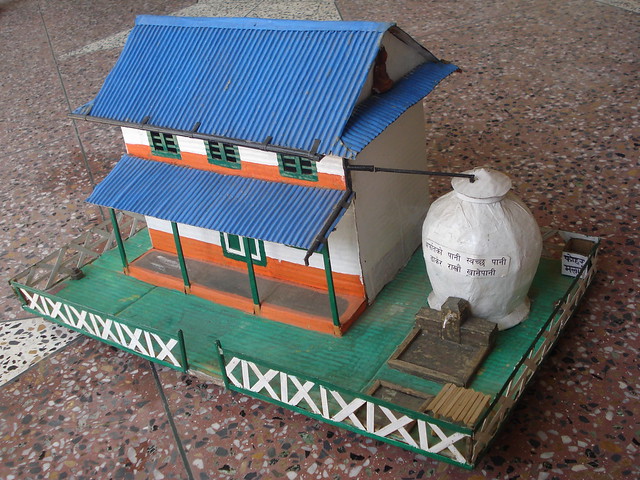
Location: Chainpur, Tanahun, Nepal
The jar-shaped white structure is rainwater harvesting tank. By volume, it can store 6 cubic meters of water. Rainwater is collected on the roof and is channeled to the jar via pipe. The rainwater is subjected to two stages of filtering process before it is collected in the jar, which is made up of ferro (iron) cement. It is usually used for drinking purposes.
This technology is suitable in places where there are no other options of drinking water. For instance, it is used in high altitude areas (there is low probability of gravity-flow water access) and places where the source of drinking water (typically a communal tap or pond) is too far away to fetch water each day. People usually spend two hours, two times a day to fetch water from the nearest drinking water source. It substantially frees up time for people to engage in other activities, thus having a sizable impact on agricultural production.
The observers who inspected these facilities in the village also claim that their survey shows that this kind of rainwater harvesting is having positive impact on nutrition intake (chiefly through the quality of water intake) and vocational productivity (handmade crafts and carpets) among villagers. Furthermore, it is also having a positive impact on school attendance as children are the ones who usually spend four hours (two hours each in morning and evening) every day fetching water.
The total cost of of one rainwater harvesting tank is around NRs 85,000 (US$1180). This project is being run by Nepal Water for Health (NEWAH).

A mockup of rainwater harvesting.
(Picture sourced from Nirmal Adhikari’s album on Flickr)